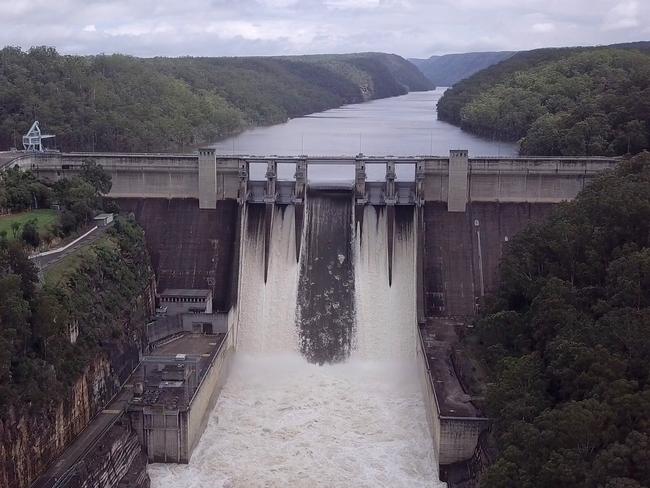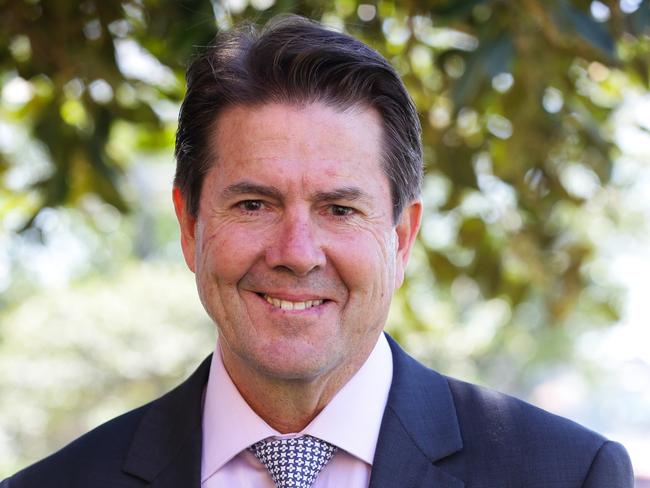New report reveals lowering Warragamba Dam capacity could plunge NSW into a drought
A new report revealing the next two decades of waterway management has warned lowering Warragamba Dam could see the state’s supply crumble in a few short years.
NSW
Don't miss out on the headlines from NSW. Followed categories will be added to My News.
Lowering the supply level at Warragamba Dam as the main answer to flood mitigation could see the state’s water network crumble in just four years if a drought hits, a new government report has found.
The Daily Telegraph can reveal the findings of the state government’s Greater Sydney Water Strategy which outlines exactly how the city’s waterways will be managed to meet demand over the next 20 years.
The new report found that lowering the Warragamba Dam’s supply level by 12m, a proposal suggested by many in response to the devastating and consecutive floods that have destroyed the Hawkesbury-Nepean Valley, would plunge the state into drought earlier and would require new desalination plants to be built.
It showed how lowering the storage level of the dam, which provides 80 per cent of Greater Sydney’s water supply, by different amounts slashes the time it would take for dam levels to reach critically low in weather conditions similar to those seen in the 2017-2020 drought.
“While raising the dam wall to create airspace for flood mitigation would not affect future water supply options, lowering the storage level for flood mitigation would mean that additional rainfall-independent supplies would be needed to address the reduction in water security,” the report found.

“For example, if the dam supply levels were lowered by 12 metres, this would reduce dam storage by around 39 per cent and overall system storage by around 30 per cent. This would also reduce the long-term sustainable supply by 80 GL/year, equivalent to one new desalination plant.”
If the dam is lowered by 12m, it would take less than three years for Greater Sydney to reach level four restrictions, just over three years to reach level five restrictions and just over four years to have less than 5 per cent of water storage left.
Water Minister Kevin Anderson slammed proposals to lower the full supply level, an option Labor leader Chris Minns has previously indicated he would look at, by claiming $14bn worth of desalination plants would need to be built to manage the water shortage.
“While Chris Minns and NSW Labor want to lower the supply level in Warragamba for flood mitigation, the Greater Sydney Water Strategy confirms this risks putting Sydney into severe water restrictions and even permanent drought,” Mr Anderson said.

“It would mean we have to start work today on at least two more desalination plants to meet the supply shortfall costing taxpayers $10 billion and adding up to $200 a year to their water bills.
“This is an unprecedented 20-year strategy designed to tackle the region’s water challenges – including droughts and a growing population – using the best possible mix of innovative water solutions.”
The landmark report outlined major changes that will help the city manage its water demands including slashing red tape to free up 20 extra billion litres of water per year to be produced at the Sydney Desalination Plant.
The government will also invest in treated reuse programs for watering trees, sports fields, cooling and greening the city, and industrial use while storm water will be better integrated in land use planning.





